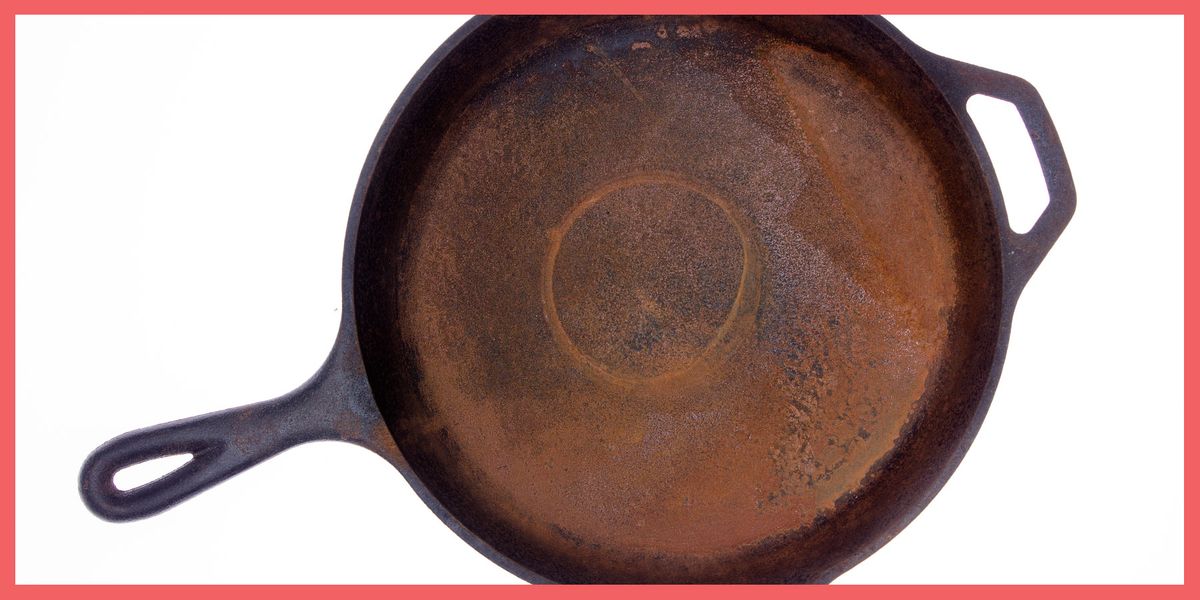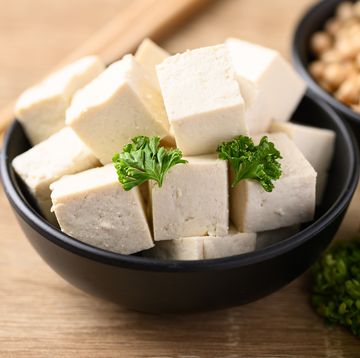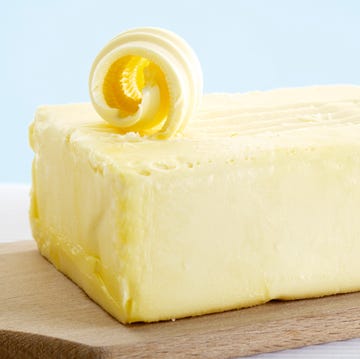Cast-iron pans are the workhorses of the kitchen. They're high quality, relatively affordable, and are great at distributing and retaining heat. You can cook with cast iron over the stove, in the oven, and even on the grill. And the best part? When maintained properly, it's naturally nonstick and can last a lifetime.
But taking care of a cast-iron pan elicits confusion and even fear for some home cooks. And with so much information out there, it's hard to tell what's actually true. Are we allowed to use soap and water? How do we season them? Is is safe to cook on built-up food?
One common cast-iron problem that's the scariest is the dreaded layer of rust. Maybe you left your pan to soak in the sink. Or perhaps your roommate unwittingly placed your cast iron in the dishwasher. Cast iron is a naturally porous material that develops rust when it interacts with water and oxygen. That means exposing your pan to water for prolonged periods of time can quickly create an orange rusty layer on the surface.
More From Delish

You've probably know that a rusty cast-iron skillet isn't great, but how bad is it exactly? Is it just a cosmetic defect, or is it also a serious health concern?
What's Wrong With A Rusty Cast-Iron Pan?
According to the United States Department of Agriculture, rust is not food safe and shouldn't be ingested. That being said, it's unlikely that a rusty cast-iron skillet will harm you. When cooking on a rusted cast iron there's a chance that some of that material will end up in your food. However, the quantities are so small that they're almost negligible.
Even though a rusted cast-iron pan doesn't necessarily present a health concern, it's still not recommended that you cook on it. The rust might add an unpleasant metallic flavor to your food. Plus, it makes using the skillet much more difficult.
Rust develops when there's no layer of seasoning on the surface of the iron. And without that seasoning, you're more likely to experience food sticking to the pan. That means pancake-flipping and steak-searing will likely go awry and be super frustrating.
How Do You Fix A Rusty Cast-Iron Pan?
If you're planning to throw away your pan just because of a little rust, well, don't. Unless your pan has completely rusted through (which is extremely unlikely) or somehow cracked in half, there's no reason to discard it.
Rust development happens to everyone's cast-iron pan from time to time, even to us. Delish's senior culinary producer Natalie Lobel has even found expensive brands develop a bright orange coating. "This is entirely fixable," Lobel says. You can return your pan to tip-top shape with just a few materials you already have in your house and a little effort.
Removing rust from your pan calls for a deep clean. Cast iron enthusiasts often advise cooks to stay away from harsh abrasives and hard scrubbing, which is true for day-to-day maintenance. But in this circumstance, we're essentially starting from scratch and rebuilding an entirely new layer of seasoning.
First, you need to remove the rust and create a clean slate. Using dish soap and steel wool, thoroughly scrub the entire pan—the top, bottom, sides, and all the nooks and crannies—until the rust is completely gone. Rinse the pan with warm water and repeat if necessary.
Next you want to remove as much water as you can. Take a paper towel and dry the cast iron thoroughly. You should also place the pan on the stove over medium heat for about five minutes to remove any last remnants of moisture.
Now you can finally start the process of seasoning your pan. On a molecular level, this is when a thin layer of fat gets so hot that it essentially turns into a plastic film that protects the cast iron when you're cooking.
Add a small amount of a neutral high-heat cooking oil (like vegetable or canola) to the pan. We're talking no more than a teaspoon. Use a clean paper towel to spread the oil and coat every surface of the pan. There should be no oil pooling anywhere.
From there, place the skillet upside down on the bottom rack of your oven and bake at 400° for an hour. Then, turn the oven off and let the pan gradually cool down until it's safe to touch. You can stop there, or repeat the oiling and baking process a few more times to strengthen the layer of seasoning.
And that's it! Now you have a nonstick, rust-free pan that looks as good as when you first bought it. To avoid having to deep clean your pan in the future, make sure your skillet is completely dry after cleaning. And according to Lobel, "the key is to keep them oiled after every use."
Gabby Romero is Delish’s editorial assistant, where she writes stories about the latest TikTok trends, develops recipes, and answers any and all of your cooking-related questions. She loves eating spicy food, collecting cookbooks, and adding a mountain of Parmesan to any dish she can.













